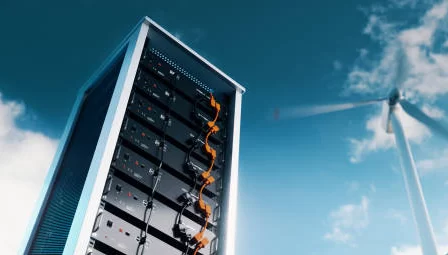Top Liquid Cooling Solutions for Energy Storage Unraveled
In today’s energy field, the development of energy storage technology is of crucial importance. As energy storage systems continue to upgrade and expand in scale, how to effectively dissipate heat has become a key issue. At this time, top liquid cooling solutions for energy storage are particularly important.
Liquid cooling technology is being increasingly widely used in the field of energy storage. Its main advantage lies in its efficient heat dissipation performance. Compared with traditional air cooling, liquid cooling can remove heat from energy storage devices more quickly, thereby keeping the equipment operating within an appropriate temperature range. This not only helps improve the performance and lifespan of energy storage systems but also enhances the safety of the system.
First, let’s understand what top liquid cooling solutions for energy storage are. These solutions usually include advanced cooling liquids, efficient heat exchangers, and intelligent control systems. The cooling liquid needs to have good thermal conductivity, chemical stability, and insulation properties to ensure that it will not cause damage to energy storage devices during the cooling process. The heat exchanger is responsible for efficiently transferring heat between the cooling liquid and the energy storage device, and the intelligent control system can adjust the cooling parameters in real time according to the temperature and operating status of the device to achieve the best cooling effect.
Among them, direct liquid cooling solutions are a relatively common top liquid cooling method for energy storage. In this solution, the cooling liquid directly contacts the energy storage device and takes away heat through convective heat transfer. The advantage of this method is high heat transfer efficiency and can quickly reduce the device temperature. However, direct liquid cooling also presents some challenges, such as ensuring the insulation performance of the cooling liquid to prevent electrical failures. In addition, a strict sealing design for the cooling system is required to prevent liquid leakage.
Indirect liquid cooling solutions isolate the cooling liquid from the energy storage device through a heat exchanger. This method is relatively safer and more reliable, but the heat transfer efficiency may be slightly lower than that of direct liquid cooling. However, by optimizing the design of the heat exchanger and choosing the appropriate cooling liquid, the efficiency of indirect liquid cooling can be improved to a certain extent.
In addition to direct and indirect liquid cooling, immersion liquid cooling is also a highly regarded top liquid cooling solution for energy storage. In immersion cooling, the energy storage device is completely immersed in the cooling liquid, and heat dissipation is achieved through convection and conduction of the liquid. This method has extremely high heat transfer efficiency and can effectively meet the heat dissipation requirements of high-power-density energy storage devices. At the same time, immersion cooling can also provide certain physical protection for energy storage devices and prevent the influence of external factors such as dust and moisture.
When choosing top liquid cooling solutions for energy storage, several factors need to be considered. First is the cooling effect, which is the most critical factor. Different cooling solutions may have differences in heat transfer efficiency, temperature uniformity, and other aspects, and need to be selected according to actual application requirements. Secondly, reliability and safety. The cooling system needs to have good stability and reliability to ensure that there will be no failures during long-term operation. At the same time, the safety of the cooling liquid also needs to be considered to avoid harm to the environment and human body. In addition, cost is also an important consideration. Different cooling solutions may vary in equipment cost and operating cost, and a comprehensive evaluation is required.
In conclusion, top liquid cooling solutions for energy storage are the key to ensuring the efficient and stable operation of energy storage systems. By choosing the appropriate cooling solution, the performance and lifespan of energy storage systems can be effectively improved, operating costs can be reduced, and contributions can be made to the sustainable development of the energy field. In the future, with the continuous progress of energy storage technology, it is believed that more innovative liquid cooling solutions will emerge, bringing more development opportunities to the energy storage industry.
Keywords: top liquid cooling solutions for energy storage, liquid cooling, energy storage devices, direct liquid cooling, indirect liquid cooling, immersion liquid cooling.

